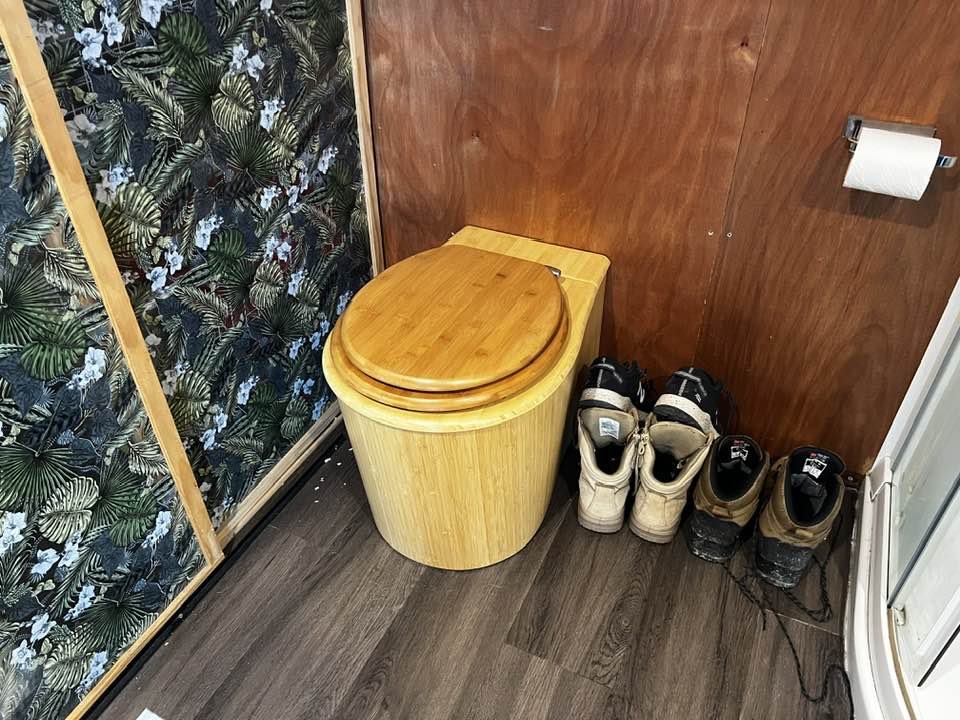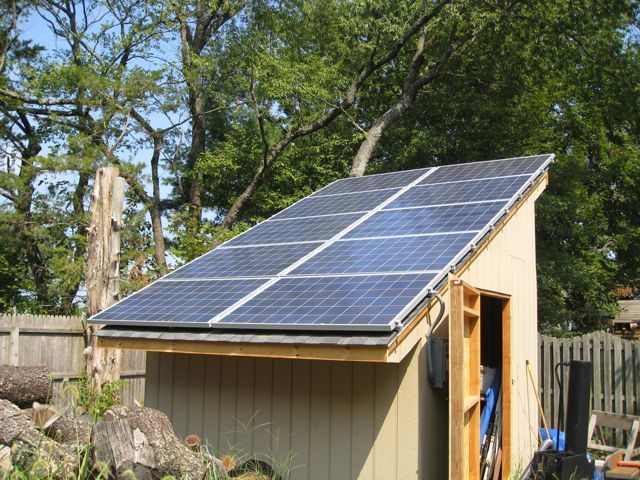Composting toilets are gaining popularity as a sustainable solution for eco-friendly living.
Unlike traditional sewer-connected toilets, composting toilets do not rely on city water and sewage systems to function.
Instead, they use natural processes to break down waste into nutrient-rich compost that can be used as fertilizer for plants.
Off-grid composting toilets are an excellent option for those living in rural areas or off the grid, as they do not require connection to public utilities.
These eco-friendly loos offer a modern and efficient solution for waste management while reducing our carbon footprint and dependence on finite resources.
We’ll delve into the world of off-grid composting toilets and explore their benefits, features, and installation process in detail.
Define your needs and goals
Before diving into off-grid composting toilets, consider your needs and goals. What is your budget? What is your space like? How many people will be using the toilet? Answering these questions will help you determine which type of composting toilet is best for you.
Assess your budget, as composting toilets can range from simple and affordable options to high-end, feature-rich models.
Evaluate your space constraints, as some composting toilets may require more space than others.
Consider the number of users, as some models may be better suited for smaller families or larger communities.
To determine the best composting toilet for your situation, ask yourself these questions
What is your budget for this project?
What is the size and layout of your space?
How many people will be using the toilet?
By thoughtfully answering these questions, you can narrow down the type of composting toilet that best fits your needs and goals.
For example, if your space is limited, a self-contained composting toilet with a small footprint may be the best option.
If your budget is tight, a simple and affordable composting toilet may be more suitable.
By taking the time to assess your specific needs and goals, you can make an informed decision and enjoy the benefits of an off-grid composting toilet for years to come.
Learn about composting principles
Composting toilets are designed to break down human waste into a nutrient-rich compost. Understanding composting principles will help you select the right composting toilet for your needs.
Composting toilets are a revolutionary solution for managing human waste in an eco-friendly manner.
These innovative devices use natural processes to break down human waste into a nutrient-rich compost that can be safely used as fertilizer.
The process of composting involves the decomposition of organic matter, including human waste, into a stable, humus-like material.
This process is facilitated by the presence of microorganisms, such as bacteria and fungi, which consume and break down the organic matter.
To select the right composting toilet for your needs, it is important to understand the principles of composting.
The first factor to consider is the type of composting system used by the toilet.
Some toilets use a passive system, where the waste is simply left to decompose, while others use an active system, where the waste is mixed and aerated to speed up the composting process.
Another important factor is the size of the composting toilet.
Larger toilets can handle more waste and may be more suitable for larger families or commercial establishments, while smaller toilets may be more appropriate for smaller households or recreational vehicles.
It is important to consider the features and maintenance requirements of the composting toilet.
Some toilets may have additional features, such as a built-in fan or a heating element, to speed up the composting process.
Others may require more frequent maintenance, such as emptying the collection bin or cleaning the blades.
By understanding these factors and considering your specific needs, you can select the right composting toilet for your home or business.
Explore different composting toilet designs
There are several different types of composting toilets available, including self-contained, centralized, and hybrid systems. Research the pros and cons of each type to determine which is best for you.
There are three main types of composting toilets to choose from: self-contained, centralized, and hybrid systems.
Self-contained composting toilets are standalone units that are designed for smaller spaces, such as recreational vehicles, boats, or remote cabins.
They are typically compact and easy to maintain, but may not be suitable for large-scale commercial or residential use.
Centralized composting toilets, on the other hand, are designed for larger spaces and are often used in commercial settings, such as restaurants, offices, and apartment buildings.
These systems typically require more space and may be more expensive to purchase and maintain, but they can handle higher volumes of waste and provide more efficient waste management.
Hybrid composting toilets combine elements of both self-contained and centralized systems, offering a more flexible and cost-effective solution for many users.
For example, a hybrid system may use centralized composting for large-scale waste management while incorporating self-contained units for smaller, more remote areas.
When deciding which type of composting toilet is best for you, it’s important to consider the following pros and cons
Pros
* Self-contained composting toilets are compact and easy to maintain, making them ideal for small spaces and remote locations.
* Centralized composting toilets are more efficient for large-scale waste management and can handle higher volumes of waste.
* Hybrid composting toilets offer a flexible and cost-effective solution, allowing users to choose the best system for their specific needs.
Cons
* Self-contained composting toilets may not be suitable for large-scale waste management and may require more frequent emptying.
* Centralized composting toilets are more expensive and may require more maintenance.
* Hybrid composting toilets can be more complex to maintain and may require specialized expertise.
When considering which type of composting toilet is best for you, it’s important to weigh the pros and cons of each type and choose the system that best meets your specific needs.
For example, if you have a small space and a low volume of waste, a self-contained composting toilet may be the best option.
However, if you have a large space and a high volume of waste, a centralized composting toilet may be more appropriate.
Hybrid systems offer a flexible and cost-effective solution for those who fall somewhere in between.
By researching the pros and cons of each type of composting toilet, you can make an informed decision and choose the system that is best suited to your needs.
Evaluate the features and benefits
Composting toilets offer several benefits, including low water usage, space-saving design, and environmentally friendly waste management. Consider the features and benefits of each composting toilet system to determine which is best for you.
Composting toilets offer a host of benefits for environmentally conscious individuals and families.
One of the primary advantages of composting toilets is their low water usage, which can be especially appealing in areas with water scarcity or restrictions.
Unlike traditional flush toilets, which use an average of 1.6 gallons of water per flush, composting toilets use little to no water, depending on the model.
Composting toilets have a space-saving design, making them an attractive option for smaller homes or those with limited bathroom space.
Moreover, composting toilets offer an environmentally friendly solution for waste management.
Instead of relying on traditional sewage systems, which can be polluting and inefficient, composting toilets break down waste into a nutrient-rich compost that can be used for gardening and landscaping.
This reduces the amount of waste that ends up in landfills and minimizes the carbon footprint of waste disposal.
When selecting a composting toilet system, it’s important to consider the features and benefits of each option.
Some models may offer more advanced features, such as self-contained systems that don’t require any external plumbing or electricity.
Other models may be more affordable and easier to install.
By considering your specific needs and preferences, you can determine which composting toilet system is best for you.
Consider the installation and maintenance
Composting toilets require specialized installation and maintenance. Make sure you understand the installation process and ongoing maintenance requirements before investing in a composting toilet system.
Installing a composting toilet system requires specialized knowledge and expertise to ensure proper functionality and maintenance.
Before investing in this type of toilet, it is essential to understand the installation process and ongoing maintenance requirements.
First, you will need to assess your specific needs and select a composting toilet system that is appropriate for your situation.
This may involve choosing between self-contained and centralized systems, as well as considering factors such as capacity, ease of use, and water consumption.
Next, you will need to locate a reputable and experienced installer who can handle the installation process from start to finish.
This may involve excavation and plumbing work, as well as electrical connections for powering the system.
It is important to choose an installer who has a proven track record of successful installations and can provide ongoing support and maintenance.
Once the system is installed, ongoing maintenance is critical to ensure proper function and hygiene.
Regular cleaning and monitoring of the composting process is necessary to prevent odors, clogs, and pathogen growth.
You may need to add bulking agents and beneficial microorganisms to the compost mixture to ensure proper breakdown of waste.
In summary, installing and maintaining a composting toilet system requires careful consideration and specialized expertise.
Before investing in this type of toilet, it is essential to understand the installation process and ongoing maintenance requirements to ensure proper functionality, hygiene, and long-term cost-effectiveness.
Explore case studies and reviews
Research case studies and reviews of off-grid composting toilets to understand how well they perform in real-world applications. Look for feedback from users and experts to help you make an informed decision.
To ensure a successful implementation of an off-grid composting toilet system, it’s essential to conduct thorough research and gather feedback from real-world users and experts.
This involves studying case studies and reviews of off-grid composting toilets to understand how well they perform in real-world applications.
Researching case studies provides valuable insights into the functionality and maintenance requirements of these systems, as well as any challenges or limitations that may arise.
Seeking feedback from users and experts can help you identify potential issues and make informed decisions when selecting a system.
For instance, you may find that certain systems are better suited for certain climates or user populations, or that certain features or components are more prone to failure.
By taking the time to research and gather feedback, you can make a more informed decision and ensure a successful implementation of your off-grid composting toilet system.
Want More? Dive Deeper Here!
Hey there! If you’re the type who loves going down the rabbit hole of information (like we do), you’re in the right spot. We’ve pulled together some cool reads and resources that dive a bit deeper into the stuff we chat about on our site. Whether you’re just killing time or super into the topic, these picks might just be what you’re looking for. Happy reading!






